#Objective On Forensic Medicine
Explore tagged Tumblr posts
Text
Multiple Choice Questions on Forensic Medicine
1. The visual disturbances seen in methyl alcohol poisoning include all of the following, except? A) Concentric diminution of visual fields for color and form B) Pinpoint pupils C) Photophobia and blurred vision D) Sudden failure of vision
Continue reading Multiple Choice Questions on Forensic Medicine
#crime scene investigation#Forensic Medicine Mcq With Answer#Forensic science#mcq on forensic medicine#Multiple Choice Questions On Fingerprints#Multiple Choice Questions On Forensic Medicine#Multiple Choice Questions On Forensic Toxicology#Objective On Forensic Medicine
5 notes
·
View notes
Note
Any knife injuries ideas, also I adore ur blog 💖
Writing Notes: Knife Injuries
Stab Wounds - Incised wounds where the length of injury on the surface is less than the depth of penetration into the body, and are the result of a thrusting action, where the force is delivered along the long axis of a narrow, pointed object.
The force of impact is concentrated at the tip of the implement, and the sharper the tip, the easier it will penetrate the skin.
The weapons of choice in the majority of assaults – both domestic and ‘on-the-street’ include lock knives, sheaf knives and kitchen knives.
Characteristics of Stab Wounds
Clean cut edges
One or both ends pointed
Non-pointed end may be squared off or split (fish tail or boat shaped defect)
Often gape (related to skin elasticity and Langer’s lines)
Cross section of weapon may be illustrated when edges of wounds opposed
Underlying bone may be scored by blade
Abrasions may be present
Frequently shows notching or a change in direction (caused by relative movement of the knife and body)
Biomechanical Factors that can be assessed in sharp force injuries:
The properties of the knife
Movement of the knife up to the point of impact (affected by clothing and movement of the victim (with respect to the assailant), and from the skin to its termination within the body
The speed and direction of delivery of the blow
Intrinsic properties of the knife - shape/sharpness/weight
Delivery of the blow - velocity/type of thrust and 'follow through' ('over arm' vs. 'under arm')
Movement of the knife within the body - affected by skin/organ resistance, movement of the victim and whether bone has been impacted
Excerpts from this previous post:
Stabbings are also usually intentional (suicide, homicide) but can be unintentional, (e.g., a slip on wet floor and landing on open dishwasher with knives pointing upward). A stabbing most often:
follows a direct path,
is low velocity resulting mostly in damage along the line of the path itself, and
are of varying depth.
The type of blade affects the wound inflicted, such as straight blade versus a serrated edge.
From a forensic medicine perspective, a stab is deeper than it is long and a cut is longer than deep.
A cut differs from a blunt laceration in that the edges are clean and the direction of the wound inflicted indicates the direction of the force.
Stabs to the chest and abdomen are particularly important to investigate as the angle of the penetration may indicate that the wound crosses both cavities injuring the diaphragm in between the two.
From this previous post:
Punctures. These are deep, narrow wounds produced by sharp objects such as nails, knives, and broken glass.
A puncture wound will be greater in depth than in its length, therefore there is usually little bleeding around the outside of the wound and more bleeding inside, causing discoloration.
Source ⚜ More: Writing Notes & References ⚜ Writing Resources PDFs
Glad to hear this, thanks so much <3 Hope this helps with your writing!
#writing notes#writing reference#writeblr#literature#writers on tumblr#dark academia#spilled ink#writing prompt#creative writing#writing inspiration#writing ideas#light academia#writing resources
175 notes
·
View notes
Text
Flower of a Poisonous Seed Part 52:
Part 51:
Tw: hate crime, vandalism, racism,
"So that's the plan. What do you think, Father?"
"I don't like any of what has happened recently, but I understand the precautions we must take moving forward. Perhaps you can take your mother with you. As much as I trust Nezha to have chosen good company for the task, I would prefer one of our own to be there by your side."
Erlang Shen drove them to Wukong and Nezha's house.
They were absolutely devastated at what they saw.
PIF: *in shock* Oh, my stars. Was it like that when you left, my child?
RS: No. No, this is far worse. The flowers are new, though.
On the sidewalk outside the picket fence were bouquets of fresh pink carnations and blue hyacinths. Signs and notes of support and love accompanied them. Packs of unused incense were laid there too. Beyond that, the house looked more like a war zone.
Someone had set fire to the yard leaving black ash in its wake. The smoke from the fire had turned the originally blue-green walls an unsavory gray. Every window was broken.
Jing: Stay on alert in case traps have been laid. We can never be too certain.
Erlang: Even if it is safe, there's no way that house is in good enough condition to be lived in.
PIF: Still, we should investigate the damage. Save any belongings that may be intact, and see if was isn't can be restored.
RS: Agreed. Cousin was wise to instruct us to take the objects we held most dear to us, but many things were left behind in favor of haste, practicality, and necessity.
Jing: Wukong's been excitedly showing Macaque pictures of their grandchildren, so at least the photo albums were spared.
RS: *laughs* As they should be.
The inside wasn't much better. Porcelain tableware and picture frames were smashed on the floor. The TV had an axe in it. The house was built out of fireproof materials but all inside that could've been burned was burned.
Red Son stepped out onto the back porch. His Uncle's favorite tea set had signs of mended breaks that weren't broken a week ago, neglected in the rush to safety. It was one of the few things Wukong had brought with him when he moved in with Nezha. It was a wedding gift from Guanyin, one that was used daily by the happy couple and yet somehow managed to survive the childhoods of their offspring.
A bold and black-hearted soul destroyed the tea set. Then a brave and kind soul took the time to mend it.
Red Son just wished he knew who to thank.
~~~
Princess Iron Fan stepped carefully through the master bedroom's bathroom. It wasn't much of a bathroom anymore.
The mirror was, unsurprisingly, shattered. Shards and medicines littered the floor. The bathtub and toilet looked like someone had taken a sledgehammer to them.
Iron Fan went back into the master bedroom to make her leave. That's when she spotted a photo of Wukong and Nezha behind the door, missed by whoever rampaged through there.
The photo featured the two holding hands while walking down the stairs. Nezha was being led by a round, curly-haired Wukong. They were smiling.
Iron Fan felt her heart break like the mirror.
She held the photo in her shaky hands as she wept for a dozen reasons.
~~~
Erlang took gentle care to lift fingerprints off of the axe lodged in the TV. He only knew basic forensic science, but a sample could help find the culprit(s) responsible.
Xiaotian Quan sniffed around for any trace of the culprit's scent.
Erlang takes his role as Co-ruler of the Celestial Realm very seriously. Jing took on the legislative role while he was in police and military affairs both foreign and domestic. This qualified as a domestic threat. Even if it didn't, he wouldn't let this thing slide.
He didn't know or care for Macaque that well but Wukong is a brother. Erlang would rip the heavens from their foundation if that's what it took to keep Wukong safe. Now more than ever, Wukong needed people who would protect him from harm.
~~~
Jing: *over the phone* Son... I'm so sorry.
Nezha: *sobbing* Oh gods, why?
Jing: We'll be taking home whatever we can salvage, but... it won't be much.
Nezha: That's okay, Father. We can get by without much.
Jing: I will collect what I can. I love you son. I will support you both in any way I can.
Nezha: Thank you, Father. Goodbye.
Jing: Goodbye.
Nezha: *hangs up* *turns to Wukong*
SWK: *tears streaming down his face*
Nezha: *crying* You caught all that?
SWK: *nods* *cries silently*
Nezha: *faking a smile* Guess it's time to look for a new place to live!
SWK: *fakes a smile back* *hugs him*
Nezha: At least there's flowers for you.
SWK: *between quiet sobs* Pink carnations and blue hyacinths mean "Sorry". Not everyone is our enemy.
Nezha: *sobs loudly* Beautiful darling! I should hope so!
The two break down crying in each other's arms. They know they'll survive this storm together. But today? Today they mourn the home they lost. The one they made together. The one they planned to spend eternity in. As usual, life had other plans.
Part 53:
Masterpost
@weaverpop @istopaskingmemate @ainnur @starrclown @cutvdo @swkbiggestdefender @fruit-fight
#lego monkie kid#lmk#legomonkiekid#lmk sun wukong#lmk swk#lmk sunwukong#lmk monkey king#lmk wukong#lmk fanfic#lmk fanfiction#lmk fan fiction#lmk fic#flower of a poisonous seed#floaps#lmk demon bull family#lmk demon bull king#lmk dbk#lmk princess iron fan#lmk pif#lmk red boy#lmk redson#lmk red son#lmk erlang shen#lmk erlang#nezha lmk#lmk nezha#lmk li nezha#lmk li jing#lmk xiaotian quan#lmk royalty duo
15 notes
·
View notes
Text
So a while back I made a post that speculated that to someone (specifically Hakuba in the post, but I do feel that it could apply to regular people as well) unfamiliar with the Detective Boys they may assume that they're all like Conan, and that if they also saw Haibara in her element they might come to the conclusion that each of the kids is a specialist of some kind.
At the time I didn't really think much further on it about what each kid would specialize in, but I've found myself thinking about it again.
As a detective team, they don't have to all have similar knowledge sets, and in fact will actually benefit from having different perspectives that can be brought to the table.
That said... this isn't so much me trying to say they're currently like this, but thinking about what I would want to see as a dynamic if they continued to be interested in being detectives years down the line. (Also just acting with the assuption that Conan and Haibara stay part of the team. So something like an OVA 9 AU, not something I expect to really happen.)
Conan is the team's generalist. He's skilled, but he spreads his knowledge base out so he can maximize his understanding of everything. If anything, his speacilties are flexible thinking and understanding the interactions between people and objects. He's a skill monkey and the defacto leader handling all coordination and planning.
Haibara is of course the medical specialist. If something has to do with medicine or chemistry she's going to know more than anyone else. First aid and forensics are her job. Conan can check the cause and time of death, but its more accurate when she does it.
Also it's definitely secondary, but she also has a pretty solid knowledge of fashion and brand name items.
Now for the more speculative ones:
Mitsuhiko is the outdoorsman. Specializing in orienteering, insects, disaster and outdoor survival. If that seems like its coming out of left feild we've already had a few where Mitsuhiko shows some wilderness experience: Mushrooms Bears and the Detective Boys, Mitsuhiko's Mystifying Forest just to names some early examples but there are plenty of others. And while a fair bit of it is stuff directly stated to have been learned from Conan, he still often ends up being the one taking the lead in survival situations when the children don't have Conan or Haibara around. So I think that could be a fun direction for him to develop into.
As for Genta... I'm sure he has plenty of potential in different directions, but just looking at the current Genta the only specialization that I think he would willingly go into is food. Which isn't super useful, but in certain circumstances it could be really helpful. The case is hinging on the alibi of a head chef that claims he was in the kitchen preparing the main dish for the last 2 hours- Genta can tell by smell and colour that that soup is canned soup from his favorite brand. A case where someone had an allergic reaction in a restaurant Genta can tell that the 'red snapper' is actually Tilapia that's been dyed.
Also could potentially be good for him to get into wrestling or something that would let him put his bulk to use to be the teams defender when they inevitably fall under threat.
Though in an ideal world I would prefer that defender role go to Ayumi- she has plenty of strong women in her life that could encourage her to take up a martial art for self defense. I think it would be nice for her to learn from them and go being a precious protected princess to the cheerful knight that keeps the team safe.
More realistically Ayumi's specialization would probably be something on the more traditionally feminine end of things, but this post is also just for me to have fun.
And I think another direction that would be fun for her to take would be if she could ends up specializing in spirituality and myths. Leaning back into all those times that the Detective Boys have gone to investigate supposedly haunted locations. Knowing all the local legends so when they run into supernatural cases she could be the one to point out that something doesn't match up with the stories. She could learn from Kazuha how to make protective charms, or on the more extreme end she could encounter Akako and learn fortune telling or basic magics.
I just think that would be fun.
#dcmk#I'm rambling#maybe I'll do more with this at some point#the way the actual children detective boys tend to be handled I often find myself treating them like a sort of small hive mind#like the three of them despite their individual differences are functionally one character#..... I would just like to see their differences increase and be explored in a way that makes them different on a narrative level#As they are it feels like you could take any of their focused episodes and swap which kid is the main character without any real changes#and maybe that's mean to say.... but it's just a thought that I've had.
10 notes
·
View notes
Text
With April showers, Letters from Watson brings us the first installment of The Sign of the Four, a prospect that makes me quake. When I was a tot of eight years, reading the library's copy of The Boy's Sherlock Holmes with a creeping sense of guilt because I was not at that time (and have not been at any time before or since) a boy, I found The Sign of the Four... long. Very long. I was obviously too young for the concepts, even though I could make sense of the words. (That sums up a lot of my reading in that era.)
I'm also reeling from last week's "The Man with the Watches," an utter tragedy of "be gay, do crime."
What's striking me this time -- what with the introduction of Holmes' cocaine use and also the watch deduction that raises a wince and a shudder from anyone who remembers that BBC Sherlock happened -- is how Watson is being positioned (and I don't mean "positioned in the path of which bullet," though apparently he got hit by more than one while in India).
Cocaine
Watson is progressive! His objections to cocaine sound so mild to us in the twenty-first century, but in 1890, scientific opinion was just barely starting to turn away from seeing cocaine as a wonder drug. It was used for local anesthesia as well as for general pep. Queen Victoria drank Vin Mariani, a wine fortified with cocaine, and so did the Pope. Coca Cola contained cocaine until 1906. Sigmund Freud was a vocal proponent of cocaine for improving mood and performance, until he botched an operation in the early 1890s while high.
A couple hair-raising reads on this topic are Cocaine: The Victorian Wonder Drug and A Cure for (Anything) that Ails You: Cocaine in Victorian Medicine.
So Holmes' original audience would have seen him as an up-to-date scientist using a socially approved means of moderating his mood. His shooting up a 7% solution of cocaine is about equivalent to a 21st century person taking nutritional supplements that are meant to boost brain power.
After all the "say no to drugs" education in the American school system, that's so hard for me to get my brain around, but there we are. Holmes is doing something no more troubling than pouring a glass of whiskey and much more scientific.
Watson, therefore, can be read either as being right at the edge of shifting scientific opinion or as being a fussbudget.
Tinge it with romanticism
I'm firmly Team Watson when Holmes starts criticizing A Study in Scarlet:
He shook his head sadly. “I glanced over it,” said he. “Honestly, I cannot congratulate you upon it. Detection is, or ought to be, an exact science, and should be treated in the same cold and unemotional manner. You have attempted to tinge it with romanticism, which produces much the same effect as if you worked a love-story or an elopement into the fifth proposition of Euclid.”
The reader is being positioned here to view with contempt the exact features of the work that we probably enjoyed. Poor Watson!
Is it possible that some reviewers commented on the melodrama of the Lucy portions? Yes, and it'd be a valid point. Nonetheless, having experienced a good many math classes, I think the fifth proposition of Euclid might be improved by a rom--
wait.
Doyle, you magnificent bastard.
Flatland: A Romance in Many Dimensions was published in 1884. It wasn't a huge success, but it seems likely Doyle could have known it, and it did, in fact, mention a love story in a discussion of angles. Back when I read it in college (because if you "liked math," someone would inevitably give you a copy of Flatland), I missed the social satire but appreciated the geometry.
Watson is canonically an effective popular writer, and I refuse to denigrate him for that.
The Watch
First, Holmes substantially invents forensic science with his monographs on tobacco and on callouses.
Then we learn that Watson is a second son, which fits with his his training for a profession and choosing the army to help make his way.
Watson was not on great terms with his brother before his brother's death. Holmes doesn't explicitly deduce this, but it's there to be deduced. Holmes knew Watson's father was long dead, which could have come up in any number of casual ways. Holmes had no idea that Watson had a brother, so Watson:
Didn't mention the brother in any context, ever.
Didn't set up any framed daguerreotypes from his childhood nor any modern photos made with the collodion process. Having a posed family photo would have been so completely normal, as would being sent new photos by family members.
Never interrupted his routine to visit his brother while living with Holmes.
Did not attend his brother's funeral (unless it took place while Holmes was away) and did not wear a black armband for mourning in Holmes' presence. Neglecting mourning for a relative would have been a sign of serious estrangement.
Holmes is possessed of some level of tact in not expanding on this topic.
Watson is also nobody's fool: he knows there are ways to fool a mark with apparently miraculous knowledge.
The question in my mind is this: did Watson deliberately distract Holmes from asking what was the subject of the telegram?
27 notes
·
View notes
Text
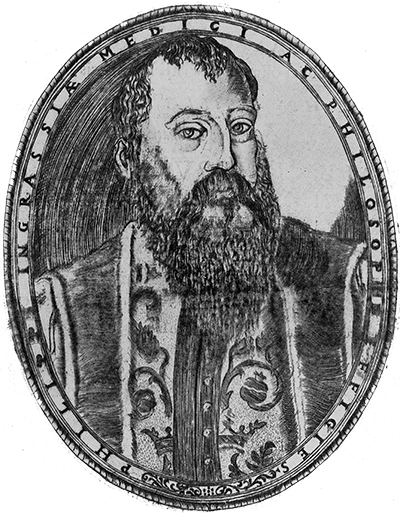
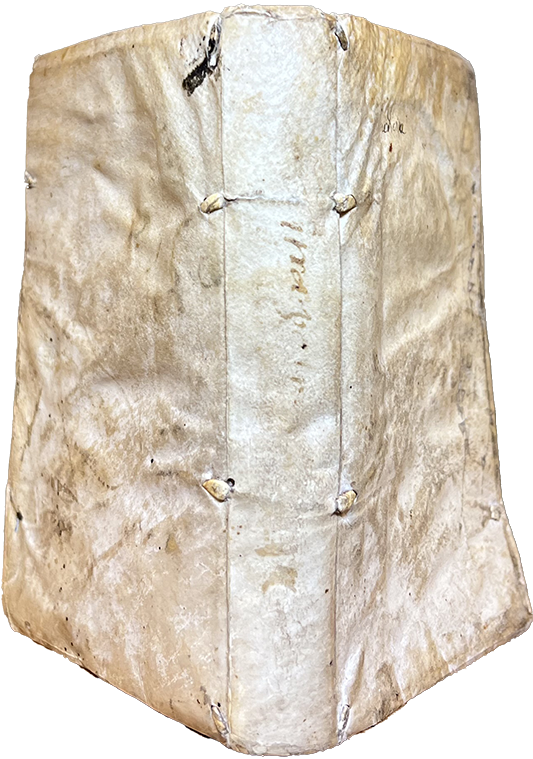


Special Guest Post from John Martin Rare Book Room
Hardin Library of Health Sciences
INGRASSIA, GIOVANNI FILIPPO (1510-1580). Iatrapologia: Quaestio, quae capitis vulneribus ac phrenitidi medicamenta conveniant [Defense of Medicine: Question regarding the medicinals convenient for head injuries and meningitis]. Printed in Venice by Giovanni Griffio, 1547. 16 cm tall.
This month's book was one of six John Martin Rare Book Room items selected to be scanned as part of the Iowa Initiative for Scientific Imaging and Conservation of Cultural Artifacts (IISICCA) project. Iatrapologia (Greek: "defense of medicine") by Giovanni Filippo Ingrassia (1510-1580) was selected for two reasons. One, with backlighting through the thin, limp vellum cover, we were able to determine it had small pieces of manuscript waste that included both green and red inks. Different inks show up at different energy levels in Computed Tomography (CT) scanners - or sometimes not at all. Finding a variety of inks helps to calibrate both types of scanners used in the project.
And two, it's just a darn cool book.
Ingrassia was an influential 16th-century Italian physician. He grew up in a well-educated family and received a classical education. He studied at the University of Padua, one of the most important western centers for the study of medicine and anatomy.
There, he learned from renowned intellectuals and physicians, such as Realdo Columbo, Bartolomeo Eustachi, Girolamo Fracastoro, and, of course, the Anatomaster® himself, Andreas Vesalius. Ingrassia would go on to make his own significant impact on not only anatomical medicine but also public health and hygiene, forensic medicine, and teratology (the study of abnormalities of physiological development).
After completing his studies in 1537, he became the personal physician to a minor Italian noble family in Palermo. Soon after, he became the professor of human anatomy at the University of Naples. It was during his time in Naples that he wrote Iatrapologia. Ostensibly a book about how to treat head wounds, it was also a critique of the current state of medicine and surgery - one of the subtitles, liber quo multa adversus barbaros medicos disputantur, translates as "a book in which many things are argued against the barbarian physicians."
In Iatrapologia and elsewhere, Ingrassia argued that medicine should be considered a less subjective discipline. Treatments should be verified, results checked, and useful diagnoses disseminated among physicians. He also thought that physicians and surgeons should be integrated into a single profession to prevent surgeries by "unqualified" people. Indeed, in Iatrapologia, he states rather dramatically,
"Oh, God, so much human suffering has been caused by the vainglory of contemporary doctors. Indeed, surgery has been abandoned to some inexperienced, empiric [i.e., quack] physicians, most of whom are not only lacking in dogma, but also in what relates to the Art." p. 252
Ingrassia was also a strong believer in continuing education, suggesting physicians should refresh their dissection skills every five years so as to avoid becoming "imperfect and ignorant physicians." If nothing else, Ingrassia demonstrated a natural skill with insults!
Ingrassia made significant contributions to the field of anatomy, particularly with bones and the skull. He is most well known for identifying a third small bone in the middle ear, which he called the "stapes." He also described differences between human and animal bones, breaking down parts of each bone to make identification easier.
Ingrassia was not only a physician and anatomist but also a pioneer in public health. He held various political positions, most notably Protomedicus (chief physician) of Sicily, and implemented measures to prevent the spread of diseases such as malaria and the plague. He emphasized the importance of preventive measures, such as isolating infected patients and cleaning objects to reduce the risk of transmission.
Overall, Giovanni Filippo Ingrassia was a remarkable physician and scientist who significantly contributed to our understanding of human anatomy and the practice of medicine.
Our copy of Iatrapologia is a delight to hold and leaf through and, as indicated, holds a few secrets inside. The limp vellum cover is soft but dried out enough that it has a bit of a rattle while opening. The cover image above shows discoloration from use and bits of writing here and there. The textblock is in excellent shape, the paper bright, and almost completely free of damage.
One interesting surprise is a piece of paper that has been pasted over the verso side of leaf A3 in an attempt to cover up a printer's error (a repeated page from elsewhere in the book). At some point, someone made a concerted effort to remove the paper to see what was underneath. Whoever glued it on, though, made sure the vandal couldn't remove much!
Other surprises can be seen in the images above. The images show close-ups of the text visible with backlighting. In one image, green and red inks are still vibrant and really jump out. The IISICCA group estimates the date of the manuscript to be roughly the 10th or 11th century and suspects the complete word is some form of "archiabbas" (chief abbot).
Another image shows a small scrap where the photo is repeated several times. Different photo filters were applied in an attempt to make the text more legible.
Contact me to take a look at this book or any others from this or past newsletters: [email protected]
#medicine#medical history#rare books#library#special collections#history#uiowa#Giovanni Filippo Ingrassia#public health
79 notes
·
View notes
Text
Hils Watches Oh No! Here Comes Trouble - Ep 12
Wow I can't believe I'm on the final episode already

Oh, wait, is that the dude who fell pre-credits in the first episode? That feels like forever ago
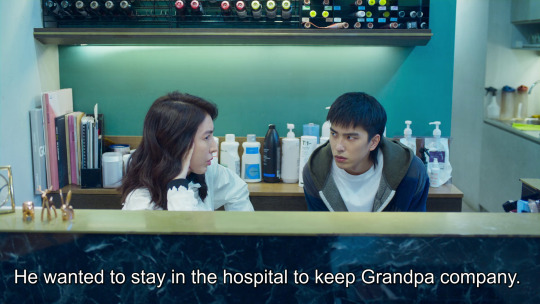
Wait, that was Pu Yiyong's grandad as a young man? And he survived that fall??? I'm so confused. Is this also a flashback telling the story of an earlier flashback? Because Pu Yiyong was not there at the end of the previous episode.
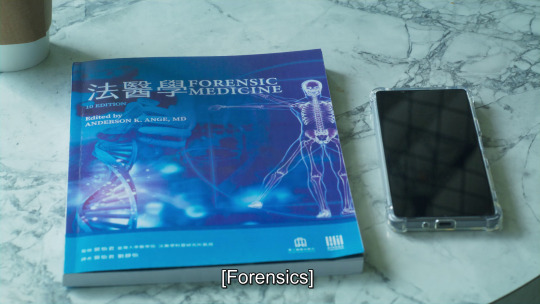
Aww Cao Guangyan wants to move into forensic medicine. I love that Pu Yiyong is subconsciously helping his friends figure out what they want to do with their lives even while he's questioning his own
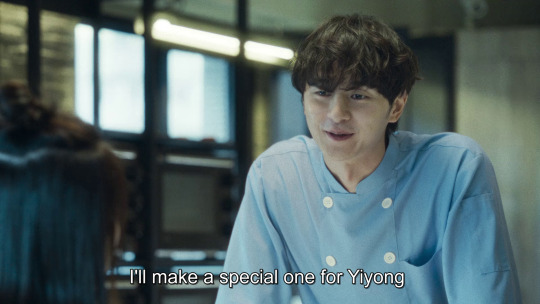
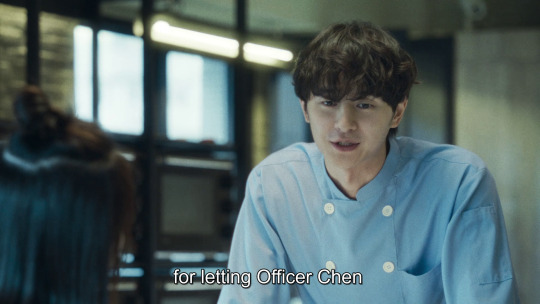
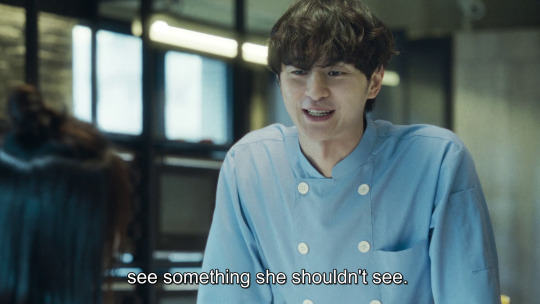
God, this is so fucking sinister now you know who he really is
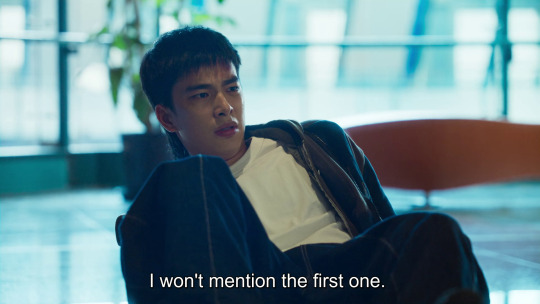
Yes, I won't mention that I've killed at least two and probably a lot more children
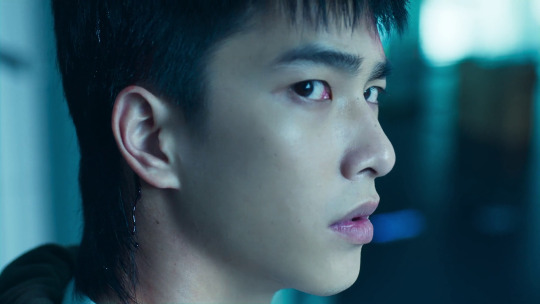
Okay, I know this is a supernatural drama so logic doesn't apply but cracking him over the head twice with a metal object would have killed him

I've just realised I've seen gifs from this scene, or a bts or something. So glad I'd forgotten about it until now because that's a pretty major spoiler. There's still 30 mins left so I assume magical plot stuff will happen but, fuck, Cao Guangyan's face

God, of course he has to 'die' so he can see his dad. I'm bawling now. Fuck.

Jesus fuck Cao Guangyan is screaming. This is horrible.
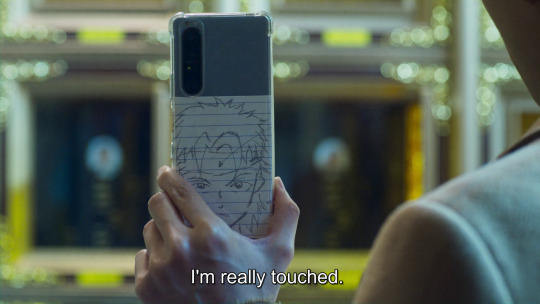
God he's got Pu Yiyong's art in his phone case I cannot

Gosh how long has he been in a coma for this time? His hair is so long
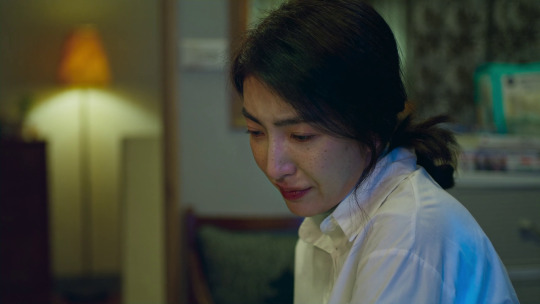
This poor woman. She's lost her husband, her father-in-law and now her son is in a coma for the second time
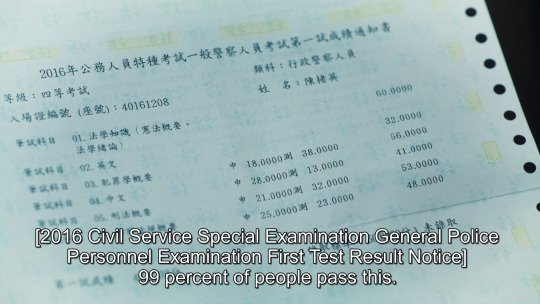
Aww that's why they call her One-per. She's in the 1% of people who fail the police entrance exam
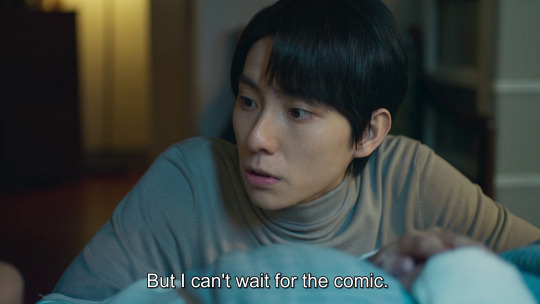
God, I love them so much. Telling Pu Yiyong he has to wake up so he can finish his comic
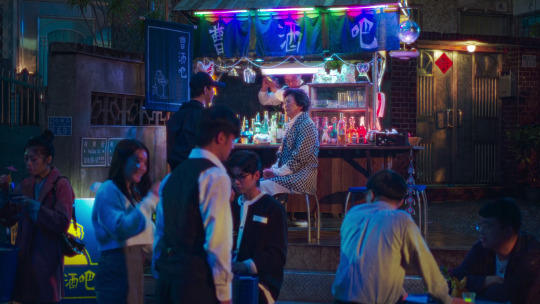
Aww yay Cao Guangyan's dad finally opened a business that's a success
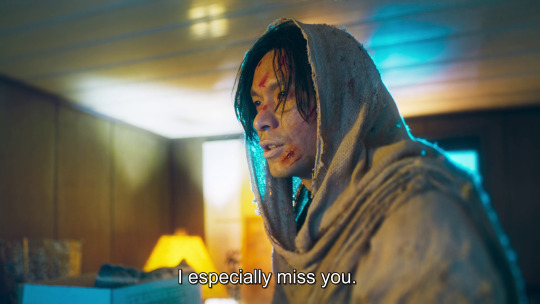
Sobbing at all the spirits he helped telling him to wake up. Also, I still lowkey ship them.
GAH THAT WAS SO GOOD! I mean I'm bawling my eyes out but sometimes a good drama be like that. Everyone who recced this to me was correct to do so
#hils watches#hils watches oh no! here comes trouble#hils watches twdramas#oh no! here comes trouble#twdrama
35 notes
·
View notes
Text
Noncanonicals Tournament Round 2, Match 2
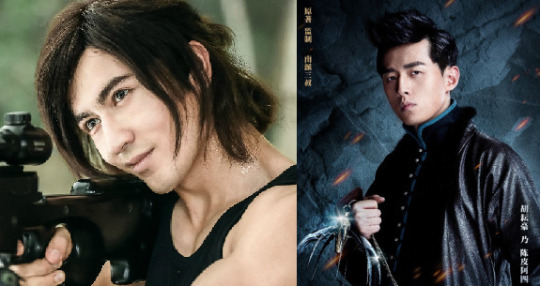
Match 2 is between Xie Lu / T from Memory Lost (shizun/mentor: Xu Sibai / S) and Chen Pi Ah Si from DMBJ / The Mystic Nine (shizun/mentor: Er Yuehong)
Propaganda under the cut! (Warning: Propaganda may include spoilers about the characters and their media)
Xie Lu / T:
Xie Lu, codename T, is a member of the Alphabet Syndicate, and leader S's personal project. From a young age, Xie Lu displayed an uncanny aptitude for sharp-shooting. When his dream of going to a specialized school for training, and ultimately competing in the Olympics, was destroyed by his own father, Xie Lu left home, living off the land in the mountains. It was here, when he was fifteen, that he was approached by S, promising to train him in the art of killing, honing his already-excellent skills with a gun into something perfect.
//From fifteen to twenty-three years old, T followed him for eight years.
But he only stayed by his side for the first three years.// (Memory Lost novel, T's Story)
//After the case, the man whom T viewed as an older brother and a God-like figure, disbanded the organization and disappeared.
Everybody including T who were still alive started living their own lives.
“I’m sorry, T,” that man said, “I promised you five years, but I only led you three years.”
But T smiled, “I will always follow your orders in my lifetime.”
That man nodded and didn’t look at him again. He stared at the setting sun that was like a blazing fire. // (Memory Lost novel, T's Story)
In the aftermath of the police raid on the syndicate's base, T was the one who carried S out of the ruins, and cared for him, standing up to the others in defense of S' wishes.
//"S's order was to send Su Mian to Jiangcheng to replace Bai Jinxi's identity after he and Su Mian were in a coma." R said, "And S has always had a cover-up, Xu Sibai, a forensic doctor. These years, S has also completed his studies in forensic medicine. Let him return to this status, a year later, he will be transferred to Jiangcheng. Then everything will start again."
Xu Nanbai smiled suddenly: "For the mentally ill, this is really a deathly romantic decision."
"We still have a choice." L raised his head and looked at everyone, "If S will also lose his memory, let them be with us and we can say that they are a pair. Then, S can fulfill his wish and he can be with her. He can do whatever he wants without much trouble."
As soon as he finished speaking, everyone calmed down. This approach violates the previous arrangement of S, but they are all predators, and this approach naturally suits them better.
"I object." T said, “This is not the idea of S.”
"Vote." R said.
There were results soon.
For L’s proposal, only T and Xu Nanbai opposed it. The reason for T’s objection is that S’wish must be respected; and Xu Nanbai's objection is because he thinks it is better to kill Su Mian.// (Memory Lost Prequel, Part 16)
//It was early in the morning one month later, everyone found that S and Su Mian were gone.
The hospital bed in the hut was empty. T and his gun disappeared together.
"Fuck!" L cursed lowly and sharp-eyed,he picked up a piece of letterhead left on the table, it was T’s handwriting, and there was only one sentence—
"That's not the life S wants."// (Memory Lost Prequel, Part 17)
While T kept up working as a hitman in S' absence, he sent half of his earnings to him to ensure his well-being, and occasionally checked in on Xu Sibai in his new life. It is also canon that he fell into a deep depression for some time after being parted from S and the rest of the syndicate.
#t all the way!!!#murder kitty was down so bad for dr warcrimes
Chen Pi Ah Si:
Listen. We know canonically Chen Pi is unhinged over his shifu's wife, but he's just as unhinged and Normal(tm) about Er Ye as he is about Ya Tou. He ripped a dude's face off for saying that Chen Pi might overtake Er Ye one day. He is the yandere flavour of a shizunfucker and you know it, and they deserve representation in this tournament as well
15 notes
·
View notes
Text
s1 episode 10 "fallen angel" thoughts
ah, mulder gets into trouble. this is becoming quite typical.
and he does so while wearing a leather jacket! good to see his sense of attire in non-business hours. doesn't change that he is still a nerd.
my question is: how much of this dedication to discovering aliens comes from a genuine curiosity for the truth/passion for doing what he considers to be the objectively Right Thing to Do and how much of it comes from the quest to get answers about his sister? is there a line that even separates those two motives? are they twisted into one forever?
anyway. his ass was in jail AGAIN! scully sent to bail him out AGAIN!
!! SCULLY LORE UNLOCKED !! She did her residency in forensic medicine!!! she has seen Things.
frankly i think scully has the patience of a saint. she's sent to wisconsin to bail out mulder's ass AGAIN and this time he super duper broke the law and both their jobs might be on the line. in going to pick him up she SOMEHOW got roped into trying to save people with fifth degree burns despite not being on duty, lost most of them, then came home exhausted after seeing what she compared to atomic bombing victims. the MINUTE she walks into the door of this motel where she is staying ONLY to get him back to stand trial, mulder listens to her say it was an awful sight to behold then IMMEDIATELY hits her with his latest alien bullshit instead of getting on the flight to defend himself and maybe save their jobs. i would have started screaming. there would have been violence. dana scully you need to be put into some sort of hall of fame for dealing with that bullshit on the regular.
(okay so in my notes i MIGHT have written "oh to be held by Mulder whilst convulsing on the floor and then gently tucked into bed" but that does NOT make me forgive him for that stunt. that being said though i thought he treated the guy stalking him far too nicely.)
he talks about the aliens like they are just another sort of creature and said that "chasing it like an animal gives them no choice but to attack" which i thought was interesting. take this man to the zoo and let me see what he has to say on the subject of bears.
a reveal: the FBI only keeps him employed because they are scared of what will happen if they let him go! bosses HATE this man!
overall a good episode but give scully a break. NOW. i am exhausted just watching her deal with all of this. we keep getting Mulder Insights in these episodes and i'm over here just excited to learn where she did her residency. i need lore on BOTH of my babygirls thank you very much!
but that being said i do like an insight into mulder's relentless quest for answers. i love a character that has their own moral code, rest of the world be damned. i love a man that needs answers and Will sniff them out like a bloodhound until his own life becomes nothing beyond a means to an end. it'll get me every time.
#he is on probation until he makes it up to scully for making her week a LOT worse#i will forgive him. eventually.#also good to know he wears leather jackets when not on duty. adding that to my list of facts.#juni's x files liveblog#1x10#txf#the x files
8 notes
·
View notes
Note
There's a 2007 lit review by Langlois in the journal Forensic Science, Medicine, and Pathology on the topic, so I'm happy to share with bruise anon:
- Blue, green, black, red, etc aren't good indicators of a bruise's age. These colors may all show up for various chemical reasons throughout the healing process. However combined with other observations such as tenderness (the area is painful to touch) they might be of some use.
- The exception is bright yellow, which only shows up when the hemoglobin starts to degrade, producing bilirubin. This may be masked by other colors in the bruise or by darker skin.
- It's not well known when bruises start turning yellow. Some studies have observed as early as 18 hours but on average about 48-72 hours.
- Some factors that might affect the appearance of a bruise include: type of object (fast objects bruise more than slow, squared edges bruise more than rounded edges), location (bony areas such as the face bruise more than the abdomen), age of the victim (most observations on how bruises heal have been done on adults and not children), blood clotting disorders, certain vitamin deficiencies, specific medications, history of injury (repeated bruises in the same location heal faster)
- Recently there have been efforts to use alternative light sources such as UV to detect bruises that might not be visible yet. This has been a really big deal for medical professionals who work with victims of violent crimes
I had to look at this article recently for a work task so I am happy to share!
Thanks for sharing
15 notes
·
View notes
Text
Discover the Fascinating World of Museums in Thailand
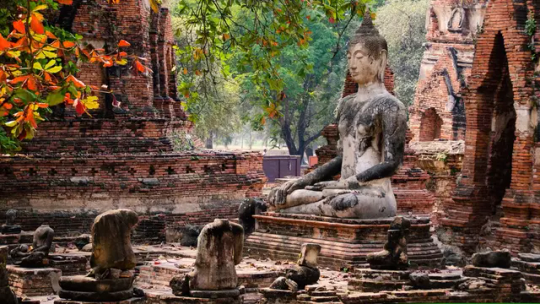
Thailand, one of the world's most popular travel destinations for backpackers, is renowned for its wonderful climate and exotic beaches. However, this nation has a lengthy history involving numerous kingdoms and political forces. This has allowed for the introduction of numerous traditions and civilizations. Visit some of the museums in Thailand that provide you with a rich and thorough history for the greatest method to learn about Thailand's past. There are many fascinating museums that are not just limited to history and will astound you.
Jim Thompson House Museum
Jim Thompson, an architect from the United States, spent approximately 25 years residing and working in Thailand. His fascinating life story begins when he served in World War II as a soldier and later made the Thai silk business well-known all over the world. The Jim Thompson house was a teak home that Jim personally designed and built, and he concentrated on decorating it with priceless Asian art silk pieces that he had gathered from all across Thailand. The house's traditional Thai architecture is on display year-round at this well-known museum in Thailand, where you can also learn more about Jim's life story and purchase some artwork.
National Museum
The enormous National Museum Bangkok, which is distributed across six separate structures and isn't typically classified as a single museum, houses a wide variety of ethnological collections of Thai art, antiquities, instruments, furniture, costumes, and other objects from previous Thai kings. This one of the interesting museums in Thailand is ideal for learning about the country's rich history, art, culture, and traditions in one location. The Buddha footprint from the Sukhothai period, the Buddha Jawan Chapel, and King Pinklao's bedroom furnishings are just a few of the unique and well-known displays. You can either go inside on your own or with a guide to learn more from them.
Siriraj Medical Museum
The Siriraj Medical Museum in Bangkok, which is horrifying yet fascinating, is appropriately referred to as the Death Museum in Thailand. It contains some of the most bizarre exhibitions, so it's not for the faint of heart. This exhibit is intense, featuring malformed and ill children's dead bodies preserved in formaldehyde alongside the skulls and skeletons of murder and rape victims. More exhibits cover the development of forensic medicine, graphic images of people dying in disasters, diseased organs, animal organs, and many more objects. Medical students from Thailand and other countries frequent the museum on a regular basis. Today, a large number of tourists visit this location to see this incredibly educational museum with Thailand tour packages.
Phuket Trickeye Museum
For your family's day out, the three-dimensional, mind-blowing, and weird trick-eye museum of Phuket promises a delightful diversion from Phuket's beaches. More than 100 painted and sculpted scenes put you in absurd circumstances. There are numerous galleries with works by Van Gogh and Da Vinci, such as a humorous recreation of the Mona Lisa, a zombie, or scenes from a movie where you are standing in front of a waterfall or strolling through the streets of a picturesque Italian town. At this Thai museum, visitors of all ages can be seen attempting to take the ideal, authentic photographs of the exhibits, which is funny not just for kids. There are also snacks and drinks accessible inside the museum.
Bangkok Art and Cultural Centre
The cutting-edge Bangkok Work and Culture Centre (BACC) presents work that represents Bangkok's developing contemporary scene. In addition to art and design, this museum of fine arts also features works by Thai and foreign artists in the fields of music, theater, photography, and film. The visitor has the ideal opportunity to savor Thailand tours contemporary art and culture in this enormous nine-story structure with its wide-ranging galleries and exquisite interior. The museum is very well curated, featuring everything from large sculptures to tiny installations. There are frequently held photography exhibitions and award ceremonies to help the artists get the recognition they deserve. Visitors can unwind in the art library and numerous modest cafes.
Thai-Burma Railway Centre Museum
Showcasing the illustrious history of the 145-kilometer Thai-Burma railway that was constructed during the Second World War. This railway, sometimes known as the "Death Railway," caused the deaths of between 75,000 and 100,000 Asian construction workers and approximately 12,000 Allied POWs. These were the individuals who were subjected to the brutal authority of the Imperial Japanese Army and suffered from ailments like starvation. This is one of the amazing places to visit in Thailand to explore during your tours to Thailand. It is the most instructive exposition to learn about how the Thai people were handled during the World War since it has numerous images and descriptions of railway buildings, prisoner living circumstances, and death casualties, among other topics.
4 notes
·
View notes
Text
Beyond the Taboo: How Underwear Odor Research Could Shape the Future of Scent Analysis

If you’ve ever wrinkled your nose at a pile of laundry, you might not realize that the odors lingering on soiled underwear are more than just unpleasant—they’re a goldmine of scientific data. While “underwear sniffing” might sound bizarre or even comical, it’s actually a gateway to advanced scent analysis with real-world applications in health, forensics, and even consumer products.
Why Study Underwear Odors?
Human body odor is a complex cocktail of volatile organic compounds (VOCs) produced by bacteria breaking down sweat and other secretions. Underwear, in particular, acts as a natural collector for these compounds, offering researchers a concentrated sample of an individual’s unique scent profile.
Scientists have long used scent analysis to study everything from disease detection to forensic identification. By analyzing the odors trapped in fabric, researchers can identify patterns linked to health conditions, stress levels, and even genetic differences. This makes underwear—despite its taboo status—an unexpectedly valuable tool in scientific research.
How Scent Analysis Works
Modern scent analysis relies on sophisticated technology:
Gas Chromatography/Mass Spectrometry (GC/MS): This technique separates and identifies the individual chemical components of an odor, allowing scientists to pinpoint specific VOCs.
Electronic Noses: These devices mimic the human sense of smell using arrays of chemical sensors, providing rapid and objective odor assessment.
Human Panels: Trained individuals evaluate odors for intensity and quality, a method still widely used in sensory science and product development.
By combining these tools, researchers can create detailed “scent fingerprints” that may one day be used for personalized health monitoring or biometric identification.
Career Paths in Scent Analysis
While “underwear sniffer” is not a recognized job title, the skills and knowledge required for scent analysis are highly valued in several industries:
Forensic Science: Odor analysis can help identify individuals or track missing persons using scent profiles left on clothing.
Health and Medicine: Researchers are exploring how body odor changes can signal diseases such as diabetes, cancer, or infections.
Textile and Consumer Products: Companies use scent analysis to develop fabrics that resist odor or to test the effectiveness of laundry products.
Personal Care and Cosmetics: Fragrance development relies heavily on understanding how different scents interact with the human body.
To pursue a career in this field, consider studying chemistry, biochemistry, sensory science, or forensic science. Gaining research experience in odor analysis labs and staying current with advances in analytical technology will set you apart in the job market14.
The Bigger Picture: Scent Analysis and Career Development
The world of scent analysis is just one example of how niche scientific fields can offer surprising career opportunities. Career development programs that emphasize interdisciplinary skills, research experience, and adaptability are crucial for students interested in emerging scientific areas1. As industries evolve, the ability to analyze and interpret complex data—including scent data—will become increasingly valuable.
Conclusion
While the idea of “underwear sniffing” might raise eyebrows, it highlights the untapped potential of scent analysis in science and industry. By pushing past taboos and embracing innovative research methods, we open the door to new discoveries and career paths that could shape the future of health, forensics, and consumer technology.
So next time you do the laundry, remember: those lingering odors might just be the key to the next big scientific breakthrough.
https://www.frontiersin.org/articles/10.3389/feduc.2022.999541/full
https://www.allsocialsciencejournal.com/search?q=F-24-14&search=search
https://ijble.com/index.php/journal/article/view/376
https://utppublishing.com/doi/10.3138/jelis.2018-0067
https://www.tandfonline.com/doi/full/10.1080/09585192.2019.1660700
https://www.emerald.com/insight/content/doi/10.1108/CDI-06-2023-0194/full/html
https://www.tandfonline.com/doi/full/10.1080/10611932.2017.1326772
https://journals.sagepub.com/doi/10.1177/08948453231173141
https://www.mdpi.com/2071-1050/14/1/357
https://journals.sagepub.com/doi/10.1177/21582440221078856
0 notes
Text
Why Expert Witness Court Representation Changes Case Outcomes
In legal proceedings, the role of an Expert Witness Court Representation is often a decisive factor in the outcome of complex cases. Whether in civil litigation, criminal trials, or specialized disputes, expert witnesses provide critical knowledge that can clarify technical or specialized matters for judges and juries. Their testimony not only influences perceptions but can fundamentally alter the trajectory of a case. This article explores why Expert Witness Court Representation is indispensable and how it significantly changes case outcomes in the Australian legal system.

What Is Expert Witness Court Representation?
Expert Witness Court Representation refers to the involvement of a professional who possesses specialized knowledge, skills, or experience beyond that of an average person. These experts are called upon to present objective, clear, and reliable evidence in court to support one party’s position. Unlike ordinary witnesses, expert witnesses interpret facts using their expertise, offering opinions on matters such as engineering, medicine, finance, forensics, or other technical fields.
Their role extends beyond mere testimony: they help legal teams understand intricate details, prepare robust arguments, and anticipate challenges posed by opposing experts. Proper representation ensures the expert’s insights are effectively communicated to the court, enhancing credibility and impact.
The Importance of Expert Witnesses in Court Cases
Bridging the Gap Between Law and Science
Legal professionals are trained in law, not specialized sciences or trades. Complex cases often hinge on evidence that requires expert interpretation. Expert Witness Court Representation bridges this gap, translating technical jargon into understandable terms. This clarity helps judges and juries make informed decisions based on accurate and relevant information rather than confusion or speculation.
Strengthening Evidence Credibility
The credibility of evidence presented in court can make or break a case. Expert witnesses bring authoritative knowledge and objectivity that elevate the weight of evidence. When accompanied by strong representation, their testimony is less likely to be discredited by opposing counsel, increasing the likelihood of a favorable ruling.
How Expert Witness Court Representation Influences Case Outcomes
Enhancing Presentation and Communication
One of the most critical factors in courtroom success is how information is presented. Expert witnesses often possess deep technical knowledge but may lack courtroom experience. Skilled Expert Witness Court Representation ensures the expert's testimony is delivered in a compelling, clear, and legally appropriate manner. This includes preparing the expert for cross-examination, structuring their statements logically, and anticipating counterarguments.
Navigating Legal Procedures and Protocols
Court processes are governed by strict rules regarding evidence admissibility, witness conduct, and presentation formats. Expert witnesses need guidance to comply with these protocols effectively. Proper representation guarantees adherence to procedural requirements, avoiding pitfalls that could undermine the testimony’s impact.
Building a Strategic Case Narrative
Expert witnesses are integral to constructing a convincing legal narrative. Their opinions often serve as the backbone of complex arguments, especially in areas such as personal injury claims, construction disputes, or intellectual property litigation. By aligning the expert’s findings with the overall case strategy, Expert Witness Court Representation ensures coherence and reinforces the party’s position.
Examples of Impact in Australian Legal Context
Personal Injury and Medical Negligence
In personal injury cases, medical experts explain the extent of harm and causation, which heavily influences compensation awards. Effective representation helps these experts deliver concise, evidence-backed testimony, increasing the chances of a successful claim.
Construction and Engineering Disputes
Disputes involving building defects or contract breaches often rely on engineering experts. Their detailed reports and testimony clarify technical complexities. Proper representation enhances their persuasive power, often turning the tide in contentious litigation.
Financial and Forensic Accounting
Financial experts assist courts in understanding economic damages, fraud allegations, or valuation disputes. Their role is critical in commercial litigation, and well-represented testimony can decisively affect the financial outcome of cases.
Choosing the Right Expert Witness Representation
The benefits of Expert Witness Court Representation depend largely on the expertise and experience of the legal professionals guiding the witness. The ideal representation involves:
A deep understanding of the relevant technical field.
Experience with courtroom procedures.
Skills in witness preparation and communication.
Strategic alignment with case objectives.
Selecting a representative who excels in these areas enhances the likelihood of presenting expert testimony that withstands rigorous scrutiny and positively influences the case outcome.
Conclusion
The influence of Expert Witness Court Representation on case outcomes is profound and often underestimated. In Australia’s complex legal landscape, the involvement of well-prepared expert witnesses supported by effective representation can transform the evidence into a compelling narrative that sways judicial decisions. For parties engaged in litigation involving specialized knowledge, investing in expert witness representation is not merely advisable—it is essential for maximizing the chance of success.
By prioritizing expert testimony and its representation, legal teams unlock a powerful tool that shapes the course of justice, providing clarity, credibility, and strategic advantage in court.
0 notes
Text
Role of Radiodiagnostic Imaging in Forensic Medicine The objective of this work is to evaluate the role of radiodiagnostic imaging in forensic medicine and to critically appraise the use of radiodiagnostic imaging in forensic investigation. There has been an increase in the use of MRI in forensics in making a diagnosis when death involved either injury or disease. Stated to be one of the: "main criticisms of the use of MRI as an alternative to conventional autopsy is the lack of validation of this imaging technique." This is due to the mixed results that have been reported related to MRI post mortem examinations in the fields of neuropathology and paediatrics. According to Alderstein et al. (2001) who made comparison of MRI with autopsy results in perinatal cases. The report states: "MRI was not good at detecting major malformations such as cardiac anomalies." Negative Findings in the use of Radiodiagnostic Imaging in Forensic Medicine In an investigation in the UK a team researched the use of autopsies using MRI scans. Results stated that: "MRI was not able to accurately assess ischaemic heart disease..." The conclusions however, state that MRI use was "a credible alternative to autopsy....doctors only accurately certify the cause of death in 31-75% of cases, and that MRI autopsies were at least as good as that." Reported as well is by Roberts et al. (2003) were conclusions that the MRI was not able to (1) image coronary artery lesions (2) differentiate thrombus from post mortem clot; and (3) Differentiate pulmonary oedema from pneumonic exudates." Further stated is that "changes associated with decomposition...cause immense interpretive problems for radiologists." Bisset et al. (2002) states: "In cases of non-suspicious death, magnetic resonance imaging is a credible alternative to invasive autopsy. General practitioners and hospital doctors accurately certify only 31-75% of deaths; the six cases examined by both magnetic resonance imaging and autopsy suggest that imaging is at least as accurate." II. Positive Findings in the use of Radiodiagnostic Imaging in Forensic Medicine 3D./CAD supported photogrammetry is used in forensics (FPHG) as a method of "recording and documenting the surface of small objects" (Bruschweiler et al., 2003) This method allows for the imaging of these objects in three-dimensional images in 'virtual space'. (Bruschweiler et al., 2003) Examined with this procedure are injuries of skin, soft tissue or bone in a patterned nature that allows matching "potentially incriminated instruments in shape, size and angle." (Bruschweiler et al., 2003) The 3D imaging is performed through taking photographs in series. Next the computer will calculate the "position in space of certain points on the surface of the objects" (Bruschweiler et al., 2003) and at the same time produces 3D models of the objects being imaged. The pieces can then be manipulated such as in the manner of piecing together a puzzle for analysis and comparison and establishment of possible congruence. Another technique that is new to forensic science is the application termed "Virtopsy." Virtopsy is used for the ability to image features of wounds and carry out post-image processing in 3D. (Forensic Medicine for Medical Students) It is stated by the Forensic Department at Bern University in Switzerland is: "Virtopsy was created for the purpose of implementation of "new techniques in radiology for the benefit of forensic science." Further stated is that: "There have been great improvements in MSCT and MRI technology, increasing both contrast and resolution and offering possibilities of 2D and 3D reconstruction. The aim is to establish an observer independent, objective and reproducible forensic assessment method using modern imaging technology, eventually leading to minimally invasive "virtual" forensic autopsy." (Bern University Dept. Of Forensics, 2005) Below are Figure 1.0: An example of 3D post processing of multi-slice CT imaging carried out by the Virtopsy team at Berne; and Figure 1.1: Pedestrian vs. car - another Virtopsy example Source: Forensics Department - Berne Univeristy, Switzerland Thali, et al. (2003) conducted a study through use of "postmortem multislice computed tomography (MSCT) and magnetic resonance imaging (MRI)" in 40 cases through examination with findings "verified by subsequent autopsy." (Thali et al., 2003) Classifications of results are (1) Cause of death; (2) Relevant traumatological and pathlogical findings; (3) Vital reactions; (5) reconstruction of injuries; and (6) Visualization." (Thali, et al., 2003) 47 causes of death (party combined) were stated in the examination of these forensic cases. Of those 25 or 55% causes of death were found through independent means with use of only radiological imaging data. Findings state: "Radiology was superior to autopsy in revealing certain cases of cranial, skeletal, or tissue trauma. Some forensic vital reactions were diagnosed equally well or better using in MSCT/MRI. Radiological imaging techniques are particularly beneficial for reconstruction and visualization of forensic cases including the opportunity to use the data for expert witness reports, teaching, quality control, and telemedical consultation." These results, although preliminary in nature, "based on the concept of 'Virtopsy' are considered by the investigative group at Berne to be "promising enough to introduce and evaluate themes radiological techniques in forensic medicine." (Thali, et al., 2003) Thali, et al. (2000) states in their work entitled "Improved Vision in Forensic Documentations: Forensic 3D/CAD-supported Photogrammetry of Bodily Injury External Surfaces Combined with Volumetric Radiologic Scanning of Bodily Injury Internal Structure" the conclusions that: "In the field of the documentation of forensics-relevant injuries, from the reconstructive point-of-view, the Forensic, 3D/CAD-supported Photometry plays an important role; particularly so when a detailed 3D reconstruction is vital. This was demonstrated with an experimentally-produced 'injury' to a head model, the 'skin-skull-brain model'. The injury-causing instrument, drawn from a real forensic case, was a specifically formed weapon." The work of Bigler, et al. (2002 entitled "Observation and Identification of Metabolites emerging during postmortem Decomposition of Brain Tissue by Means of In Situ 1H-Magnetic Resonance Spectroscopy" the findings that when investigation of postmortem decomposition of brain tissue through use of 1H-magnetic resonance spectroscopy (MRS) was performed on a sheep head model and selected human cases "the inclusion of spectra of model solutions in the program LC Model confirmed the assignments in situ." In the work of Thali, et al. (2003) entitled "New Horizons in Forensic Radiology: the 60-second digital autopsy-full-body examination of a gunshot victim by multislice computed tomography" states as its' goal of study being "the full-body documentation of a gunshot wound victim with multislice helical computed tomography for subsequent comparison with the findings of the standard forensic autopsy." (Thali, et al., 2003) Acquisitioned were "complete volume data of the head, neck and truck" (Thali, et al., 2003) in a matter of less than one minute of scanning time. The digital autopsy was quicker even with post-processing time added than the classic forensic autopsy. Findings state that advantages exist in comparison with the forensic autopsy of the tradition form based on the nondestructive approach. Discussion While the use of MRI, CAD, and other radiodiagnostic imaging in the filed of forensics medicine may not always be the optimal procedure to use it appears that there are certain procedures that the use of radiodiagnostic imaging has propelled to a new level of efficiency and accuracy in the field of forensic science. This work has shown examples of procedures that without having the benefit of the use of radiodiagnostic imaging that much would be left to the imagination after the conduction of the traditional autopsy procedure. This work has also given examples of new models being presently constructed for testing in the field and has shown as well the questions and criticisms that this type of diagnostic tool in forensics has surrounding it. Conclusion It is the conclusion of this researcher that there is much left to be discovered through investigation and examination of the uses of radiodiagnostic imaging in the field of forensics medicine and that this type of diagnostic assistance in the field promises to be that bring about much positive effect in diagnostic procedures in forensic medicine. Certainly, it must be stated that more study is needed and worth pursuing in this diagnostic method in forensics. References Bisset, R. et al. (2002) Postmortem examinations using magnetic resonance imaging: four-year review of a working service BMJ 2002;324:1423-1424 (15 June) Online available: http://bmj.bmjjournals.com/cgi/content/full/324/7351/1423 Post Mortem Magnetic Resonance Imaging (MRI) (2005) http://www.forensicmed.co.uk/developments.htm Alderstein M.E., Peringa J., van der Hulst V.P.M, Blaauwgeers H.L.G., van Lith J.M.M. (2003), 'Perinatal mortality: clinical value of post-mortem magnetic resonance imaging compared with autopsy in routine obstetric practice', BJOG: An International Journal of Obstetrics and Gynaecology, Vol 110 Issue 4 pp. 378-382 Roberts I.S.D., Benbow E.W., Bisset R., Jenkins J.P.R., Lee S.H., Reid H., Jackson A. (2003), 'Accuracy of magnetic resonance imaging in determining cause of sudden death in adults: comparison with conventional autopsy', Histopathology 2003 42: 424-430 May 2003 Virtopsy: Institute of Forensic Medicine, University of Bern, Switzerland 2005 the Technical Working Group Forensic Imaging Methods (TWGFIM)Online available at http://www.virtopsy.ch/ Thali, et al. (2003) Analysis of Patterned Injuries and Injury-Causing Instruments with Forensic 3D/CAD supported photogrammetry (FPHG): An Instruction Manual for The Documentation Process" Forensic Science International 2003 March 25,; 142(2):130-8. PubMed Abstract. Thali, et al. (2003) New Horizons in Forensic Radiology: the 60-second digital autopsy-full-body examination of a gunshot victim by multislice computed tomography" Am J. Forensic Med Pathol.2003 Mar; 24(1):22-7. PubMed. Bruschweiler, W. et al. (2003) Analysis of Patterned Injuries and Injury-causing instruments with Forensic 3D/CAD supported Photogrammetry (FPHG): An Instruction Manual for the Documentation Process. Forensic Science Int. 2003 Mar 25;132(2):130-8. PubMed. Forensic Medicine for Medical Students: Online available at http://www.forensicmed.co.uk/developments.htm The Role of Radiodiagnostic Imaging in Forensic Medicine Read the full article
0 notes
Text
Forensic Science in Policing: A New Frontier Introduction A broad perspective of forensic science in the words of Saferstein, 1981, p.3 reads as “forensic science is the application of science to law”. This broad perspective of forensic science makes any and every branch of science integral to forensic science, should any part of it be found useful to law. The term law in this perspective translates to any branch of the administrative system involved in the maintenance of law, thus including the police department. Forensic science is not new, but the modern era has witnessed dramatic advances in science and its tool technology and this has its strong implications on forensic science as it applies these advances to law. Forensic Science The scientific method with regard to its role in forensic science involves three components of analysis, comparison, and evaluation. Analysis can be taken as the study of an unknown item for the purpose of determining its essential characteristics, while comparison can be taken as evaluating these characteristics in the light of their comparison with other known items, and evaluation as discriminating the similarities and dissimilarities with objective of identification in mind. The term forensic is taken to imply the appropriateness for a court of law. It is this understanding of the two terms and their combination that makes for any branch of science when applied to law becoming a part of forensic science. As a result forensic includes many diverse fields that include and are not restricted to forensic medicine, toxicology, psychology, anthropology, specialists in fingerprints, firearms, tool marks, documents, and criminology. (2). Policing Policing in broad terms can be taken to mean the efforts taken by society to curb or prevent the occurrence of crime. The conventional model of policing involves the police force through random patrols, rapid uniform response, deployment at crime sites after the occurrence, and detection of a crime for investigation purposes. Thus the emphasis in the conventional model of policing lies in the reliance on the law enforcement agency and the legal system as the main means to curb or prevent the occurrence of crime. Variances to this conventional model have appeared in the form of community policing and problem-oriented policing as supportive measures by society to curb and prevent the occurrence of crime. (3). Forensic Science in Policing Forensic science finds a significant role for it in policing, with particular emphasis on the role that it can play in the investigation of criminal acts. This has resulted in the growing use of forensic science among other investigation tools to assist the law enforcement agencies in the detection and investigation of crimes. Forensic science is used in particular when there is a paucity of evidence using other tools for the detection and investigation of crimes. In these circumstances forensic scientists use their knowledge, skills and tools of forensic science to uncover hidden evidence to assist the detection and investigation of criminal acts. Forensic scientists using the wide array of forensic tools uncover evidence that aids in bringing those responsible for the crime to justice. (4). Forensic Science the New Frontier An assessment of the history of crime investigation demonstrates that in essence it has remained the same, because the basic evidence of the crime has remained the same. The availability of fingerprints at the scene of the crime or on the tools of the crime still continues, though the surfaces may have changed with time and technology. Yet, forensic science has also advanced to make use of any the fingerprints available at the scene of the crime or on the tools of the crime to aid in the investigation. The essential causes of death have not changed with time, but the tools used to cause death have changed with advance in technology. (5). Read the full article
0 notes
Text
Medical Tweezers: Precision Instruments for Surgical and Clinical Use

Medical tweezers, also known as surgical forceps, are essential tools used in various medical and surgical procedures. Medical tweezers Designed for precision handling, these instruments help doctors, surgeons, and healthcare professionals grasp, manipulate, and remove delicate tissues, foreign objects, or sutures. Their fine-tipped structure allows for controlled movements, making them indispensable in surgery, wound care, and laboratory applications.
Design and Features
Medical tweezers are crafted from high-quality stainless steel to ensure durability, corrosion resistance, and easy sterilization. They come in various shapes, including straight, curved, and angled tips, to accommodate different medical procedures. Some tweezers feature serrated or smooth jaws for enhanced grip, while others have tungsten carbide inserts for added precision and longevity.
The ergonomic design of medical tweezers minimizes hand fatigue, allowing healthcare professionals to perform intricate procedures with comfort and control. Some variations also include a locking mechanism to hold tissues or objects in place without continuous pressure, providing efficiency during lengthy operations.
Types of Medical Tweezers and Their Uses
Different types of medical tweezers are used for specialized applications. Adson forceps, for example, are commonly used in surgical procedures to grasp delicate tissues without causing trauma. They are designed with fine, serrated tips to ensure a secure hold. Dressing forceps, on the other hand, are used for applying and removing dressings, handling gauze, and assisting in wound care.
Tissue forceps, such as those with 1×2 or 2×3 teeth, provide a firm grip on tougher tissues, making them useful in general surgery. Micro tweezers are designed for precision work in neurosurgery, ophthalmology, and microsurgical procedures, where extreme accuracy is required. Splinter tweezers are used in emergency rooms and first aid kits to remove foreign objects like glass shards or splinters from the skin.
Applications in Surgery and Medical Procedures
Medical tweezers are widely used in surgical settings for handling tissues, suturing, and assisting in delicate operations. They play a vital role in plastic surgery, dental procedures, and ophthalmology, where precision is critical. In dermatology, tweezers help in removing ingrown hairs, extracting foreign bodies, and handling fine sutures.
In laboratory environments, tweezers are used for handling sensitive specimens, slides, and instruments without contamination. Pathologists and researchers rely on tweezers to manipulate biological samples with precision. In forensic medicine, they are used to collect trace evidence from crime scenes, ensuring the integrity of collected materials.
Maintenance and Sterilization
To maintain the effectiveness of medical tweezers, proper cleaning and sterilization are necessary. After each use, they should be thoroughly cleaned with disinfectants and sterilized in an autoclave to eliminate bacteria and contaminants. Regular inspections ensure that the tips remain sharp and free from damage. Storing tweezers in a protective case prevents bending or dulling of the tips, preserving their accuracy for future use.
Conclusion
Medical tweezers are essential tools in healthcare, offering precision and control in surgical, clinical, and laboratory settings. Their versatile designs cater to a wide range of medical applications, from delicate tissue handling to foreign object removal. With their durability and specialized functionality, medical tweezers continue to be a fundamental instrument in ensuring successful medical procedures and patient care.
0 notes